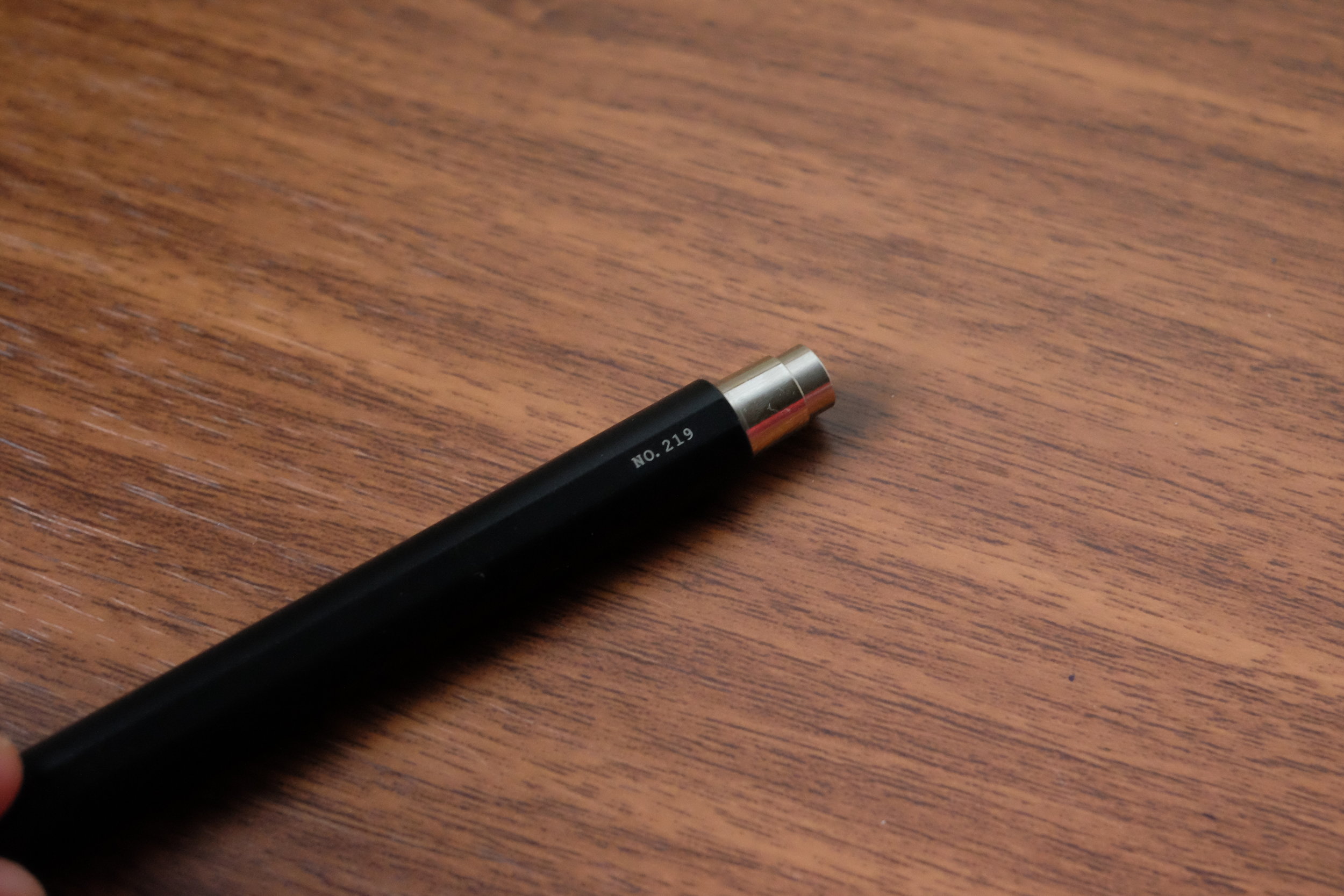Of all the different types of pens I've used over the years, I've given the rollerball the least amount of love - until this year, when something "clicked" and the retractable liquid ink rollerball now stands to become my primary fountain-pen backup. The latest pen to capture my attention is the Machined Pen from Los Angeles-based design house Inventery, a new company that launched in January of this year.
Inventery bills itself as an "independent design house specializing in the design and manufacturing of refined goods and stationery products," selling products for the "thinker, journeyman, and everyday essentialist." Their shop carries an eclectic array of goods, including the Machined Pen, the Construction Notebook, Clip-on Sunglasses, bifold wallets, and rings.
Currently, the Inventery Mechanical Pen is available in four colors: Brass, Onyx (coated brass), Chrome, and Brushed Chrome (both of which are also plated brass). The three shown here, from left, are Brushed Chrome, Brass, and Onyx.
"Refined" accurately describes the Machined Pen. Inventery has distilled the design of this pen down to the bare minimum, with three well-thought out design touches that set it apart from other "minimalist" machined pens on the market. First, the Inventery pens are all machined from a single rod of solid brass (even the black "Onyx" and Chrome pens are coated/plated brass). In order to swap out the refill, you unscrew the knock mechanism and drop the refill in through the back of the pen. As a result, you have a pen with seamless unibody construction and no seams or lines.
Per Inventery, the Schmidt knock mechanism has been modified to allow you to change the refill from the back of the pen.
Second, branding is minimal. Each pen features Inventery's small "I" logo on the front, with each pen also numbered on the reverse side. The logo and numbering appear most prevalent on the Onyx pen; they're barely visible on the brass and chrome-plated versions, especially once the brass has developed a nice patina from regular use.
Finally, my favorite part - and, in my opinion, the Machined Pen's key selling point - is the facet. Inventery has made one side of this pen flat, to act as a roll-stopper that allows the pen to sit on your desk. It's a small, thoughtful design choice that makes the Machined Pen a highly practical tool. Sure, a clip can serve the same purpose, but as I discuss further below, adding a clip would have ruined the beauty of this design.
You can see the facet on the Onyx pen pictured here.
The Inventery Machined Pen accepts the venerable Schmidt P8126/P8127 refill, and also features a Schmidt knock mechanism. This refill needs no further review - it writes smoothly and remains the standard for capless rollerball refills. Some people out there dislike the Schmidt knock mechanism, observing that there have been reported issues with Schmidt mechanisms wearing out over time. I've never personally experienced this, though Inventery does sell replacements at $9 each. For smaller designers and manufacturers, I'm not sure what other options they have, since I'm unaware of any stock mechanisms better than the Schmidt, and I imagine that developing your own mechanism "in-house" is out of the question until you reach a certain level of expertise/scale.
This picture shows the Inventery Mechanical Pens after about a month of use. While some other reviews have remarked that the brass pen doesn't develop a patina, that has not been my experience. It's comparable to the patina that's developed on my Kaweco Brass Sport and Supra. Compare this shot with the picture at the beginning.
And, no, this pen does not have a clip. In the information Inventery sent me accompanying the pens, they indicated that this was an intentional decision because the Mechanical Pen is intended to be a desk tool, not for pocket carry. That's how I've used these pens, keeping one pen at home and another at work within easy reach of my keyboard. The combination of the facet and the rather hefty weight ensures that these pens stay put. They won't go rolling off your desk anytime soon. Despite the weight (57g), the pens are well-balanced for someone with average-sized hands, like me. The back end of the pen sits just past the webbing between my thumb and index finder, so I don't run into the issue, common with metal pens, of it feeling "top heavy." If you have smaller hands, however, you may have trouble.
Inventery did a nice job on the packaging for the Mechanical Pen. Each pen arrives snug in a foam-lined box and slipcover, along with a microfiber drawstring bag.
Takeaways and Where to Buy
While there are a lot of machined rollerball pens on the market, these stand out. Inventery didn't make "just another" machined EDC-style rollerball pen that looks like any other: they went with a well-thought out design that's "minimal" yet still functional. I also like the fact that they've remained unapologetic about the fact that this pen doesn't have a clip. Personally I think it would ruin the seamless nature of the design, and this pen would likely be too heavy to clip to a shirt pocket anyway.
You can purchase the Inventery Mechanical Pen directly from Inventery's website, along with their other collections. The Mechanical Pen retails for $90, which is comparable to similar machined metal pens and strikes me as a very fair price. I've enjoyed using these pens and look forward to seeing what Inventery releases in the future.
Disclaimer: Inventery sent me the pens featured in this review free of charge, for review purposes.





